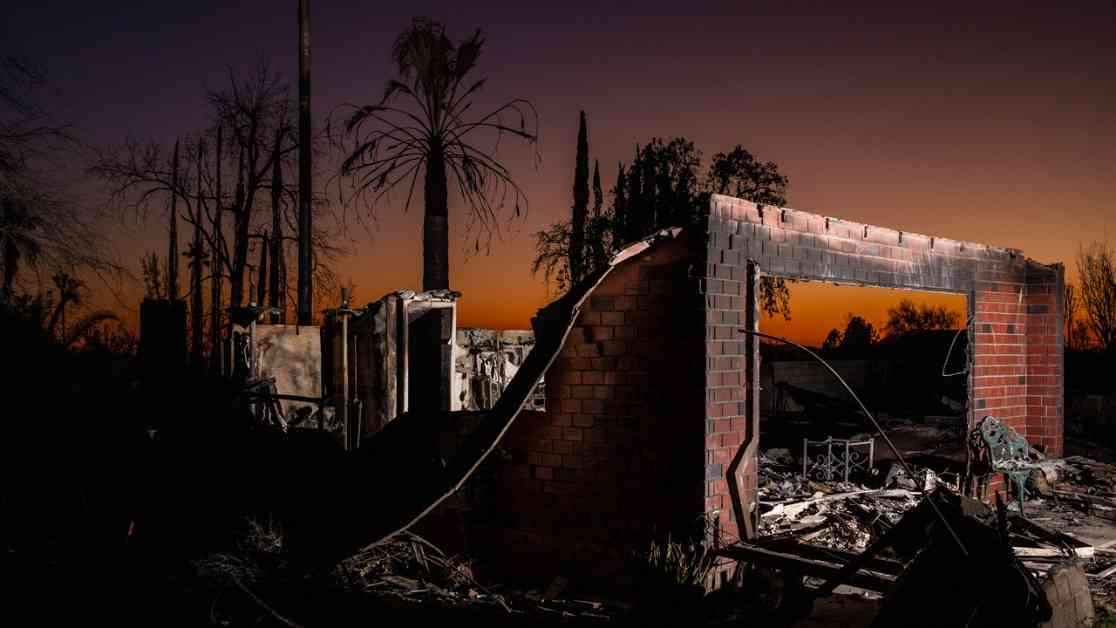The Battle Against Los Angeles Inferno: A Firsthand Account
In the midst of the relentless Eaton Fire that was ravaging Southern California, I found myself waking up in a tent at the Rose Bowl, transformed into a bustling fire camp for first responders. It was the seventh day of the inferno, one of several wildfires engulfing the region. The day began with a briefing by an emergency-management team known as incident command at 7 A.M. The grim news was shared that the fire had swelled to encompass fourteen thousand acres, with a containment level of a mere fifteen percent. The blaze had mercilessly crept into the San Gabriel Mountains to the north and spread into the suburbs to the south. An expert on fire behavior issued a dire warning, stating, “It does not get much worse than it’s going to be the next few days. We could have rapid fire spread in basically any direction.”
Embarking on a mission to contain and control the fire, I joined a twenty-person handcrew, the infantry of wildland firefighters, who diligently dug lines around the fire. Our caravan of white pickup trucks headed east to Sierra Madre, a community nestled in the foothills of the mountains. Upon arrival, we were met with the eerie sight of the vacant Eaton Canyon Golf Course, surrounded by the devastation of homes reduced to rubble. Armed with hand tools and chainsaws, we set out on foot, prepared to face the arduous task ahead. Each of us adorned with silver fire shelters in our backpacks, ready to deploy if flames encroached upon us.
Our mission was to cold trail, scouring the boundary where the fire had ceased, on the lookout for hot spots that could reignite. The grueling task involved traversing treacherous terrains, crossing backyards, scaling fences, and scouring drainage ditches for any remnants of heat. The importance of our painstaking efforts became apparent; every inch had to be meticulously checked by hand for an area to be declared fully contained. The process of cold trailing, though laborious and dirty, was crucial in ensuring the fire did not rekindle and wreak further havoc.
Despite the Eaton Fire not being classified as a megafire by California standards, it had already claimed its place as the fifth deadliest fire in the state’s history, with seventeen confirmed fatalities and several individuals still missing. The scenes of destruction in Altadena and Pacific Palisades painted a grim picture of the devastation caused by the inferno. As we navigated the charred remnants of homes, the juxtaposition of untouched neighboring properties left a haunting impression of the fire’s indiscriminate path of destruction.
Interacting with the handcrew captain, known simply as D, shed light on the personal sacrifices and unique perspective of a seasoned firefighter. D’s journey from being an incarcerated firefighter to deciding to retire from the frontline after seven years was a testament to his commitment to his family and a desire for a new chapter in life. His profound respect for the nature of fire as an entity to be revered, rather than underestimated, highlighted the intricate dance between humans and the primal force of wildfires.
As the day progressed, the camaraderie and resilience of the handcrew were evident in their unwavering dedication to containing the fire’s spread. The physical and emotional toll of the relentless battle against the flames was palpable, yet each firefighter remained steadfast in their mission to protect lives and property. The human stories that emerged from the fire camp painted a poignant picture of sacrifice, dedication, and a shared sense of purpose among the diverse individuals united in the fight against the inferno.
The evolving landscape of wildfires in California, exacerbated by climate change and human interference, underscored the urgent need for proactive measures to prevent future devastation. The delicate balance between preserving ecosystems’ natural fire cycles and safeguarding communities from catastrophic blazes posed a complex challenge that demanded a collective effort to find sustainable solutions.
The relentless battle against the Los Angeles inferno was a poignant reminder of the resilience, courage, and unwavering commitment of wildland firefighters in the face of adversity. As the winds of change swept through the charred landscape, the handcrew’s tireless efforts to contain the fire served as a beacon of hope in the midst of destruction. The lessons learned from the inferno underscored the need for a concerted effort to coexist harmoniously with wildfires, acknowledging their role in shaping landscapes and fostering biodiversity.
As I bid farewell to the firefighting company on the front lines, their dedication, sacrifice, and unwavering spirit left an indelible mark on my perception of the battle against wildfires. The poignant stories of resilience, camaraderie, and shared purpose among the diverse crew members reinforced the profound impact of their work in safeguarding lives and ecosystems. The battle against the Los Angeles inferno was not merely a fight against flames; it was a testament to the human spirit’s resilience in the face of nature’s fury.












